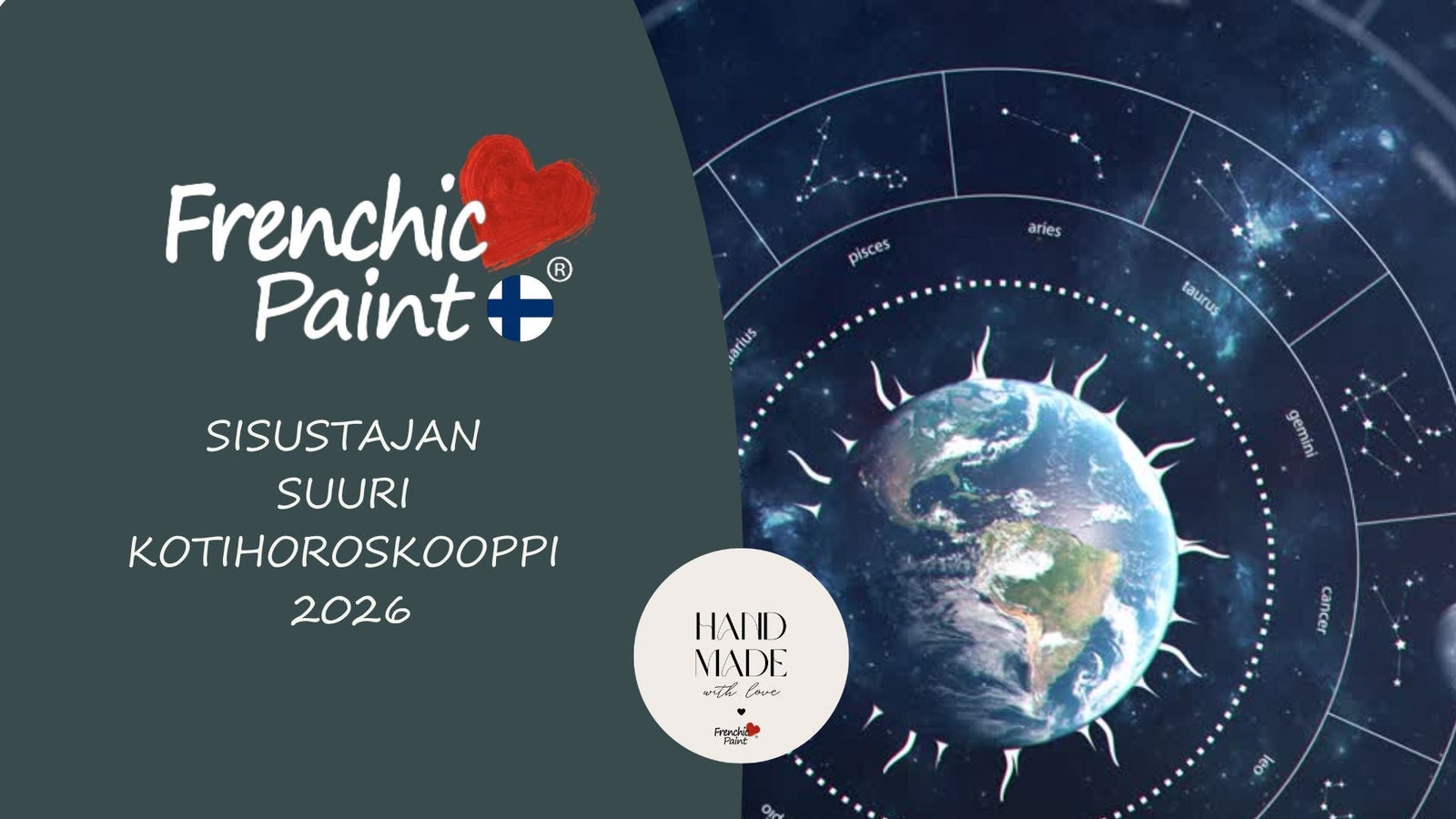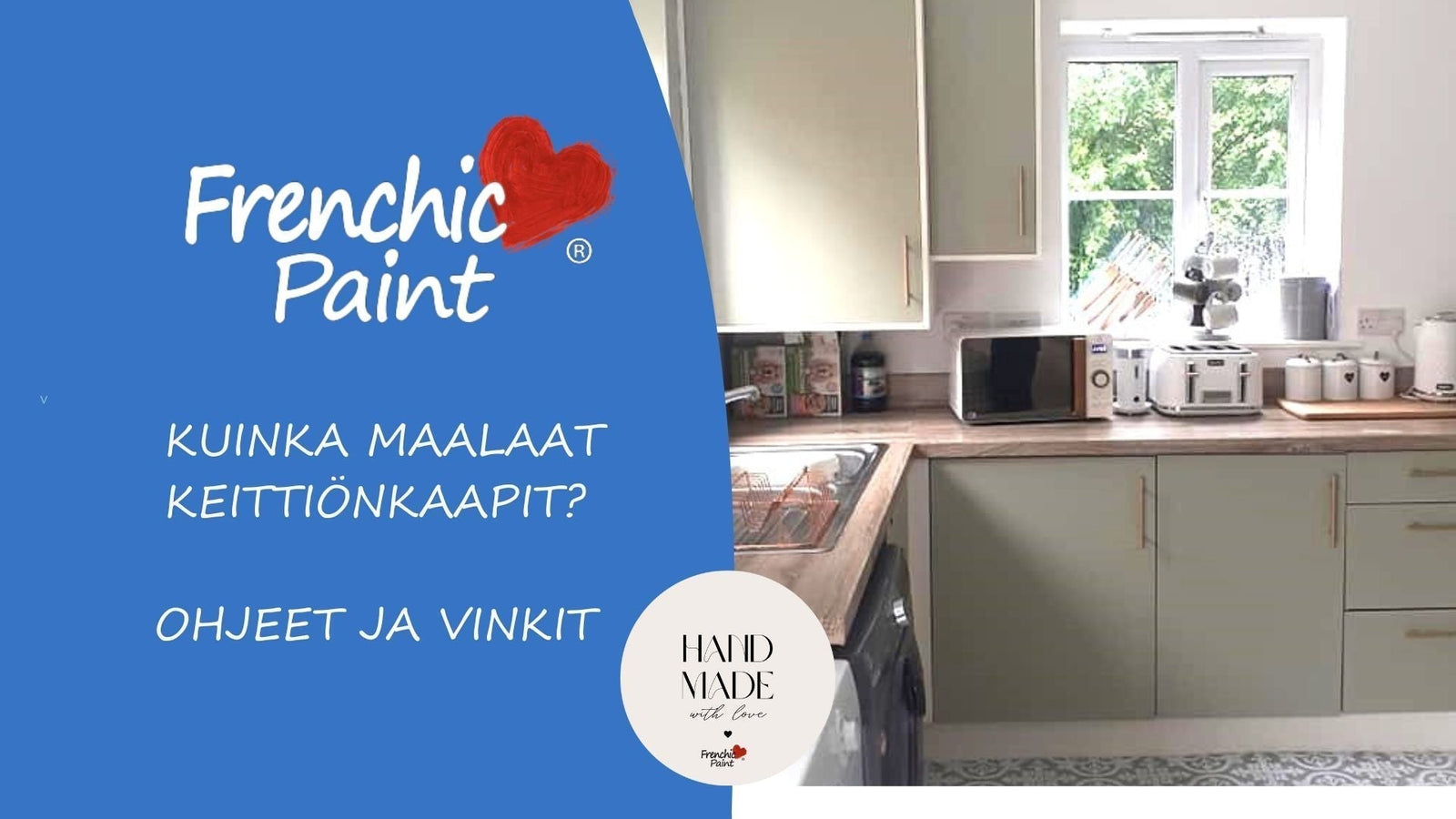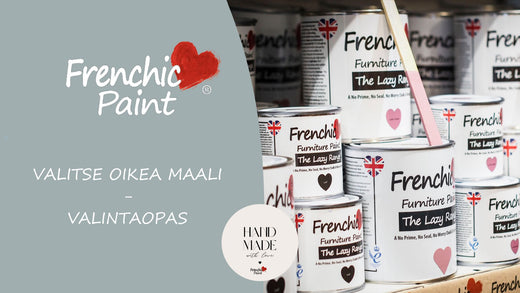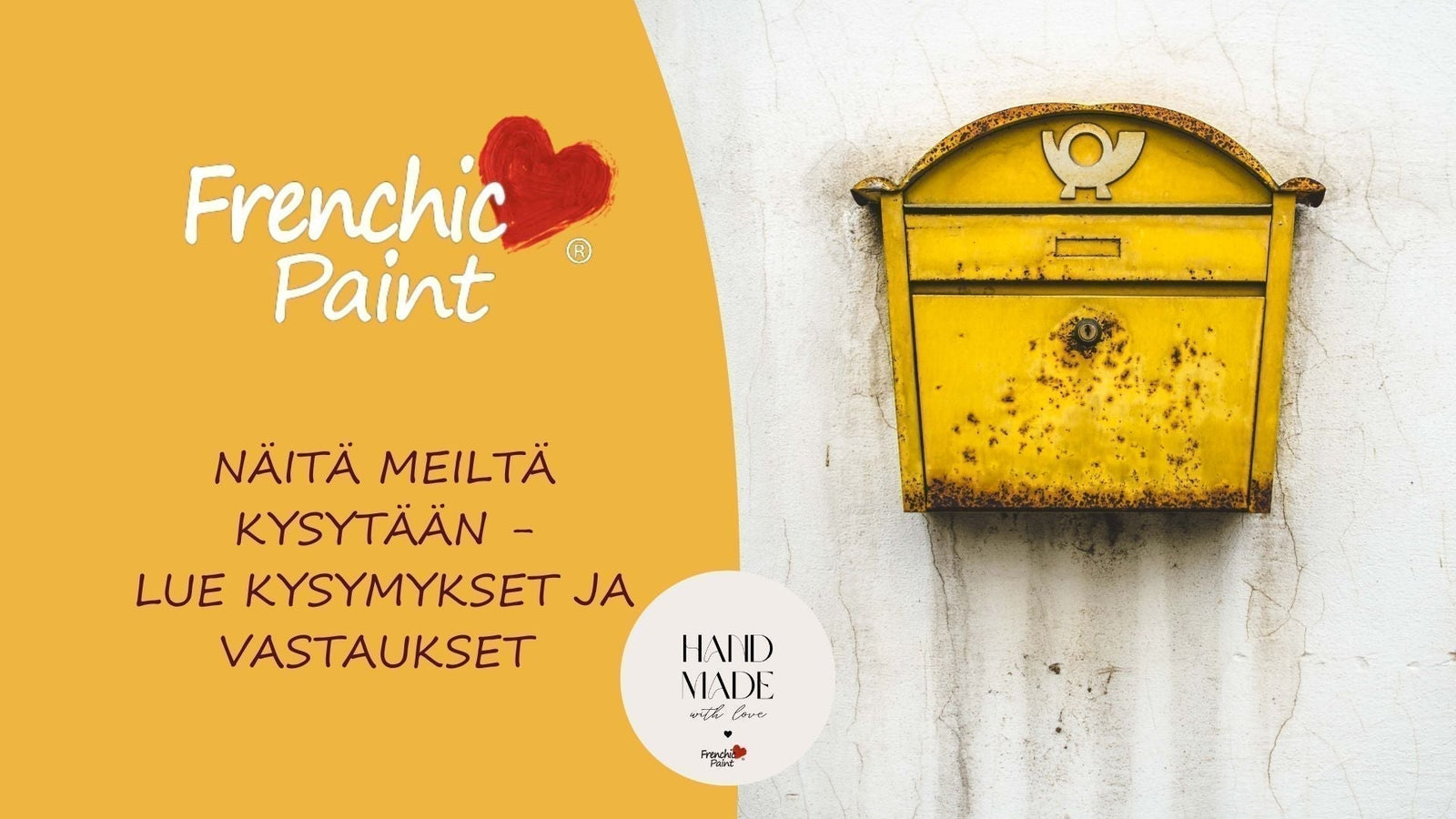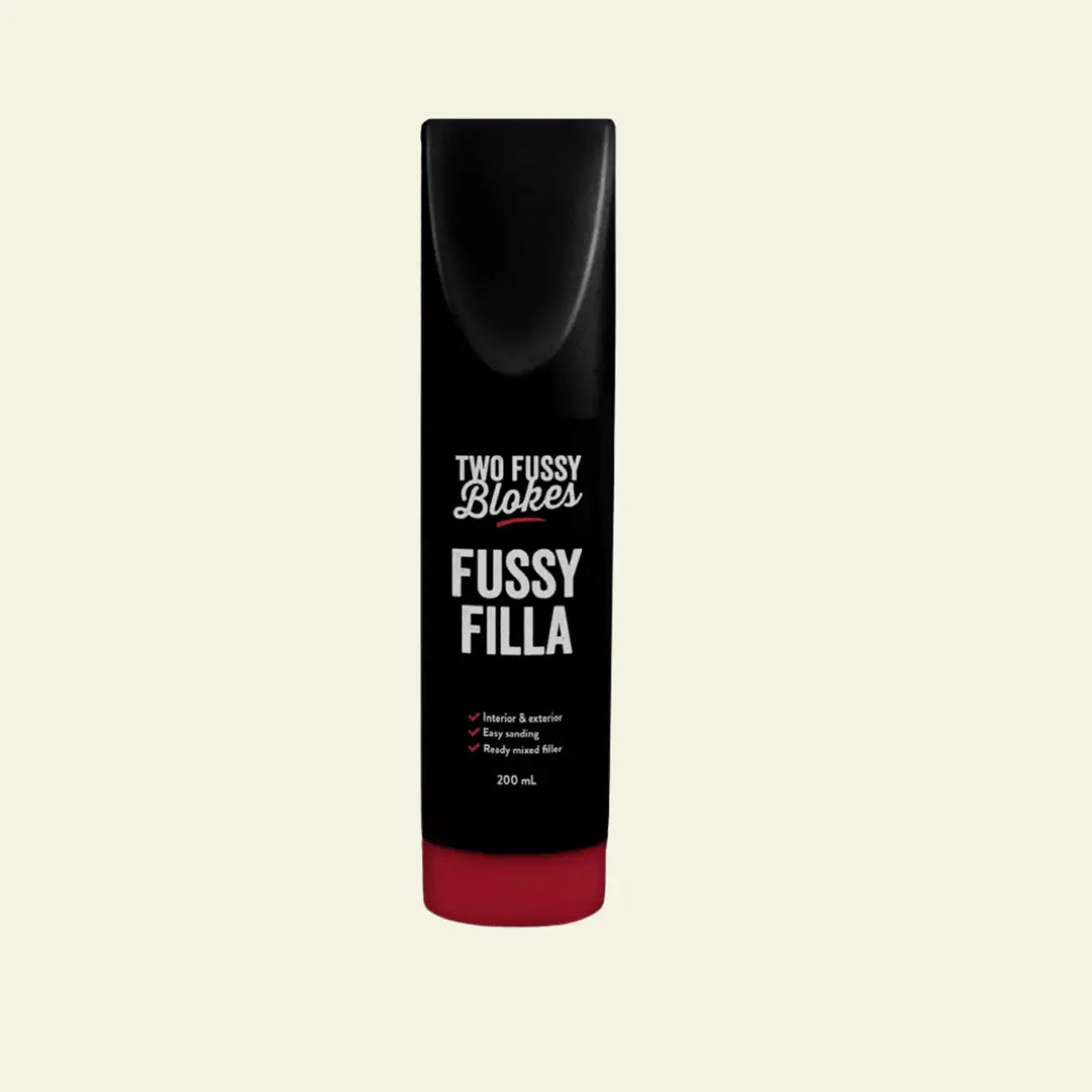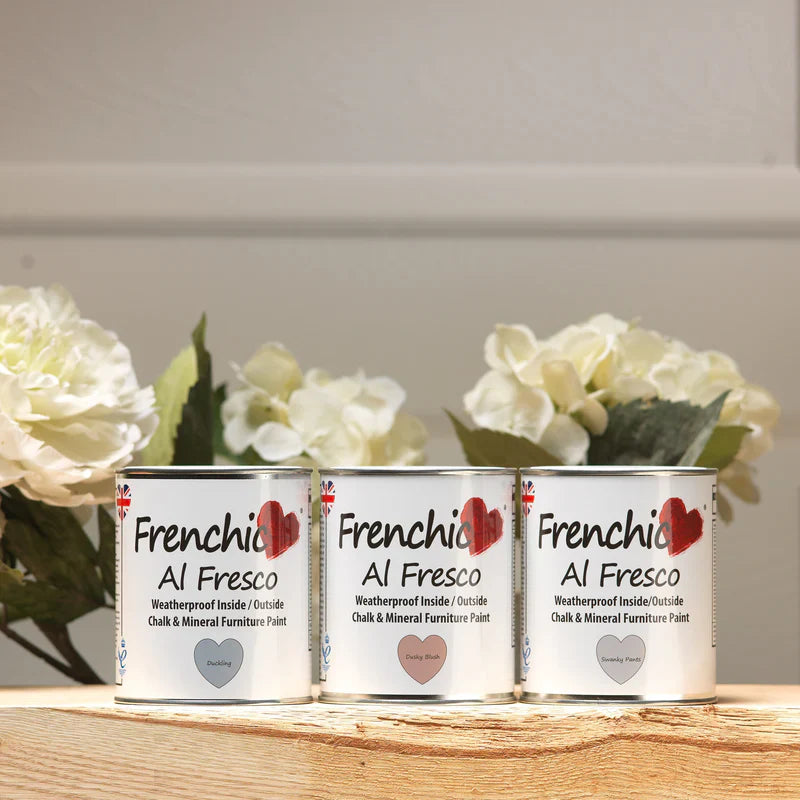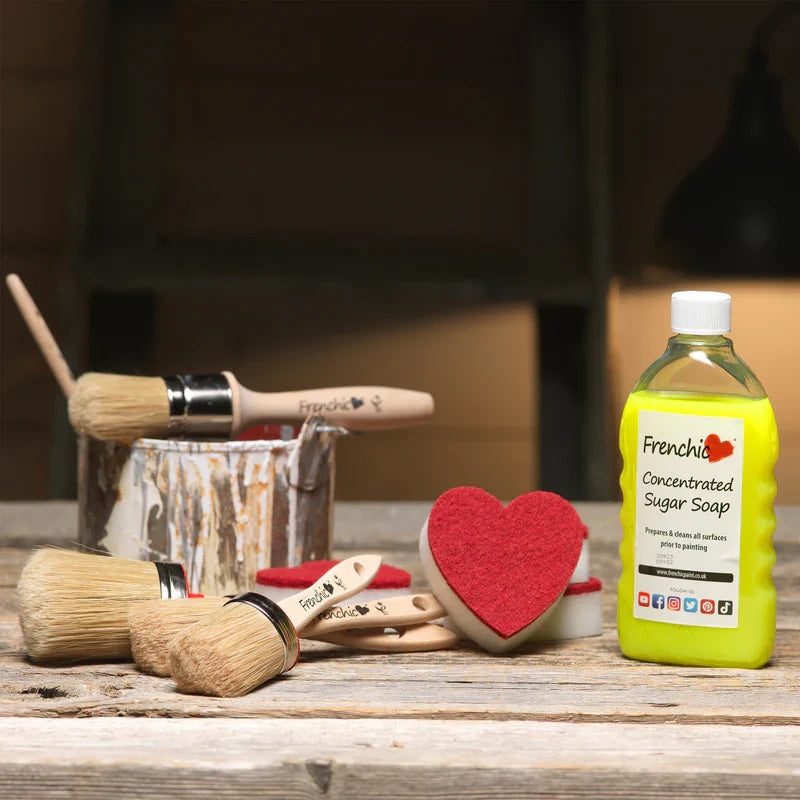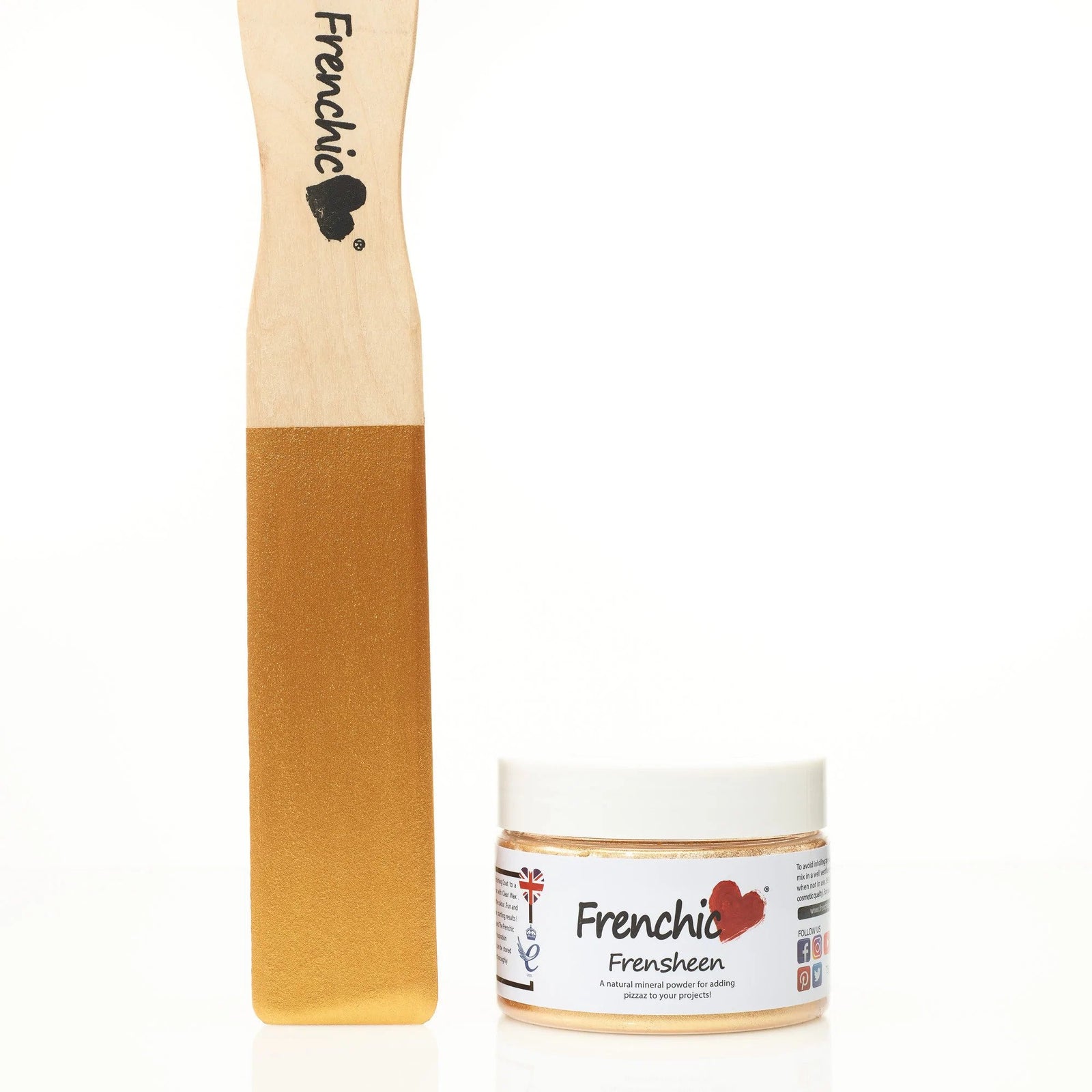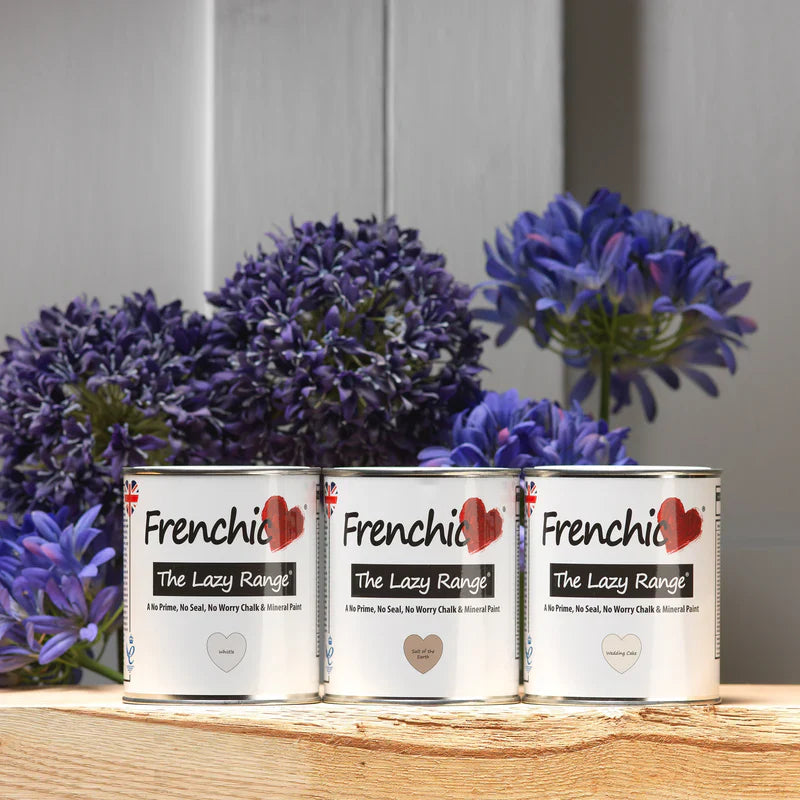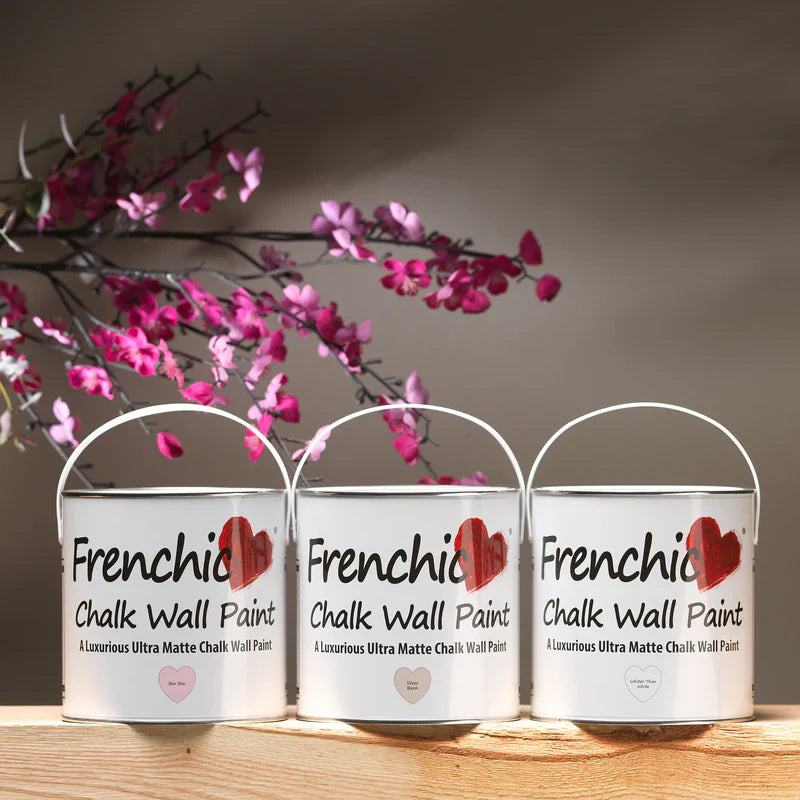Hur använder jag IOD Paint Inlays-ark?
Steg 1: Planera layouten för dina mönster på ytan.
Steg 2: Använd rutnäten på baksidan av inlay-arket, klipp vid behov och lägg åt sidan. Om du använder ett upprepat mönster och radvis lägger mönstret, klipp bort överflödiga marginaler från varje ark.
Steg 3: Applicera ett rikligt och jämnt lager mineralbaserad kalkfärg på en korrekt förberedd yta. Arbeta i små delar, vanligtvis högst 30x30 cm eller i arkets storlek, för att kunna kontrollera färgens torkfönster under arbetet.
Steg 4: När färgen fortfarande är våt, placera arket med mönstersidan nedåt (baksidan har tryckta rutnät för att enkelt skilja fram- och baksida) i den våta färgen och jämna ut det, men undvik att flytta arket i den våta färgen.
Steg 5: Spraya lätt med en jämn vattendimma så att arket blir blött. Använd en slät fuktig svamp, en mjuk vikt trasa eller en liten IOD Silicone Paint Blade-spatel och dutta jämnt och lätt med tryck så att mönstret får bra kontakt med den målade ytan. Undvik att flytta eller dra Paint Inlay-arket för mycket efter att det har placerats, eftersom det kan orsaka otydlighet eller fläckar.
Steg 6: Upprepa steg 3-5 för att avsluta mönstringen och justera sektionerna vid behov. Rasterlinjer hjälper till att passa ihop mönstrets kanter vid behov.
Steg 7: Låt Inlay-mönstret torka. Torktiden kan variera från 10 minuter till en timme beroende på förhållandena. Det våta sprayade pappret bleknar när det torkar.
Steg 8: När du är redo att ta bort Paint Inlay-arken från ytan, spraya jämnt med vatten igen och låt suga i 30 sekunder; detta hjälper mönstret att lossna. Dra försiktigt pappret uppåt från ett hörn och håll det i en låg vinkel. Det bör lossna lätt utan att rivas. Om inte, spraya igen, vänta en stund och försök igen.
Steg 9: Om du vill kan du tona eller mjuka upp mönstret med vatten eftersom pigmentet fortfarande är rörligt och aktivt. Du kan till och med lägga till fler färger.
Steg 10: När du är nöjd med Paint Inlay-mönstret, låt projektet torka helt. Torktiden varierar beroende på färglagrets tjocklek, mängden vatten som används i processen, rumstemperatur och väderförhållanden. Om ytan känns kall är den inte helt torr. För säkerhets skull, vänta 24 timmar.
Steg 11: Nu är det dags att avsluta ytan med en beläggning.
Det finns några olika alternativ för finish:
Spraya önskad vattenbaserad tätningsprodukt med en sprutpistol avsedd för färger och ytbehandlingsprodukter, tillsätt t.ex. Finishing Coat från sprayflaskan.
Applicera lätt med pensel en vattenbaserad polyuretan-, lack- eller epoxitätningsprodukt direkt på arbetet. Denna metod leder sannolikt till viss pigmentförflyttning; detta minimeras genom att undvika överbehandling.
Skapa en "spraybar" fixativ genom att blanda 50/50 vatten och din favorit vattenbaserade tätningsprodukt. Applicera med en finfördelad spray. Låt torka helt och applicera sedan en penselbar tätningsprodukt.
Börja ditt arbete med en kommersiellt tillgänglig spraybar tätningsprodukt eller konstnärslack. Låt den torka helt och applicera sedan önskad finishprodukt.
Du kan också använda vax för att försegla ditt verk. Applicera enligt tillverkarens anvisningar och polera till glans som vanligt.
Vissa oljebaserade finishprodukter kan appliceras direkt på ytan med pensel utan reaktivering. Testa på ett litet område innan applicering. Observera att de flesta oljebaserade finishprodukter tenderar att gulna till bärnstensfärg över tid, vilket är mest märkbart på ljusa färger.
VIKTIGT MEDDELANDE: Kontrollera alltid kompatibiliteten mellan tätnings-/finishprodukter när du använder mer än en produkt.
Tips! Om du är en händig person eller målare och gör många olika DIY-projekt, är två Frenchic-produkter - 'must have' - pålitliga produkter för DIY-entusiaster som alltid bör finnas i din färghylla när skaparlusten slår till:Frenchic-vaxer ochFinishing Coat. Dessa mångsidiga Frenchic-produkter passar bra för olika målnings- och DIY-projekt.
Och naturligtvis vit och svart färg som du kan använda för egna färgblandningar, välj till exempel ren vitWedding Cake och svartLoof.
Lue lisää erilaisista maalauskohteista ja maalien sopivuudesta tästä.
Maalin valinta on helppoa Frenchic sarjassa. Jos maalaat sisäpintoja, voit valita sävyn mistä tahansa sarjasta.
Frenchic maalit ovat ns hybridimaaleja, jotka sopivat monille erilaisille pinnoille ja materiaaleille.
I färgguiden finns även alla nyanser som säljs i Finland (oktober 2024) och deras beskrivningar.
På baksidan av den praktiska färgguiden finns plats för anteckningar där du kan lista de nyanser och objekt du redan använt.
Obs! Färgguiden ersätter inte färgkartan eller fungerar som en färgprov för trycktekniska skäl. Beställ färgkartan separat. Färgkartan innehåller nyanser från två serier: Al Fresco och Lazy Range. Färgkartan är på engelska.
Peel & Stick-färgprover är avtagbara miniprov gjorda av äkta färg för att säkerställa perfekt nyansmatchning. Inget kladd, ingen stress – ta bort klistermärket från baksidan och fäst det på väggen eller skåpdörren och låt ditt hjärta bestämma!
Enkel jämförelse och säkert resultat.
Det är viktigt för varje företag att få kundfeedback om produkterna, och det gäller även oss! Genom att skriva en produktrecension ger du värdefull information till andra som fortfarande funderar på sitt eget projekt.
Vi uppskattar din åsikt! Klicka på texten SKRIV EN RECENSION vid produkten du använt och berätta vad du tycker. Du kan också lägga till en bild i din feedback.
Ett varmt tack för din feedback!
Vi gör allt vi kan för att säkerställa att nyanserna i webbutiken ligger så nära de verkliga nyanserna som möjligt, men nyanser kan variera mellan olika enheter – beroende på flera faktorer, såsom inställningarna på din telefon, surfplatta eller datorskärm.
Detta innebär att vi inte kan garantera att färgnyansen exakt motsvarar vad du ser på din skärm.
Vi rekommenderar alltid att du testar nyansen i det rum och på den yta där den är tänkt att användas innan ett större projekt. Beställ Färgkarta och Färgguide för färgplanering.
Observera också att 250 ml och 750 ml burkar alltid är från olika tillverkningsbatcher. Undvik nyansskillnader mellan batcherna genom att blanda färger från olika batcher: på så sätt säkerställer du att nyansen är densamma i hela ditt projekt.
Granska och bedöm nyansen först när den är torr enligt anvisningarna och efter minst två lager färg. Beställ en liten burk för testning eller besök din närmaste återförsäljare för att se färgerna själv. Färgkartan innehåller nyanser från två serier: Al Fresco och Lazy Range.
OBS! Peel & Stick-provet har trycket: Chalk Wall Paint, eftersom nyansproverna ursprungligen är gjorda för att välja väggfärgsnyanser. Observera att färgvalet i Finland skiljer sig från det i England. Du kan dock använda Peel & Stick-nyansprovet även för att välja nyanser från andra serier!
Du kan läsa mer om nyanser här.
Observera också att du reserverar tillräckligt med färg för ditt projekt:
Se till att du reserverar tillräckligt med färg för att slutföra projektet. På grund av stor efterfrågan är vissa nyanser slut i lager. Den normala branschrekommendationen är att om du behöver mer än en färgburk, se till att de är från samma tillverkningsbatch (batchnummer) eller, om det inte är möjligt, blanda färgburkarna innan målning för att säkerställa ett enhetligt slutresultat. Noggrann omrörning av färgen (länge och ända ner till botten) är viktigt för att få rätt nyans. Om underhållsmålning behövs rekommenderar vi att måla hela ytan istället för små lagningar för att reparationen ska bli så osynlig som möjligt.
Du kan välja bland följande alternativ i kassan:
Frågor om produkter, betalningssätt eller leverans? Vår kundtjänst hjälper dig!
OBS! Öppna ditt paket och färgburken med försiktighet. Beställ inte Frenchic-produkter som lätt fryser till uppvärmda upphämtningsställen utomhus. Håll ditt färgpaket varmt även efter upphämtning; lämna inte lätt frusna/vattenbaserade färger i t.ex. en kall bil under shoppingrundan. Frusen eller frostskadad färg rekommenderas inte att användas. Vi ersätter inte frusen/frostskadad färg.
Ditt paket levereras till dig från Finland, Tammerfors.
Frenchic Finland är en inhemsk webbshop och ett finskt familjeföretag.
Tack för att du använder en inhemsk webbshop!
Du får en orderbekräftelse till din e-post och kan enkelt skriva ut ett PDF-kvitto från orderbekräftelsen.
Frågor om produkter, betalningsmetoder eller leverans? Vår kundtjänst hjälper dig!
















Lätt att använda
Hög kvalitet
Vänlig kundservice
Snabb leverans
